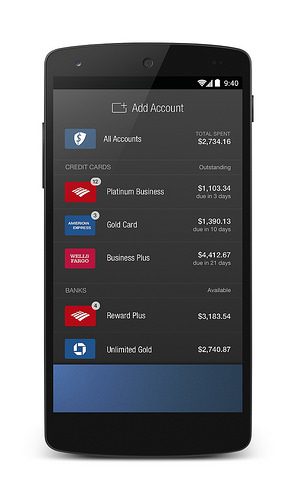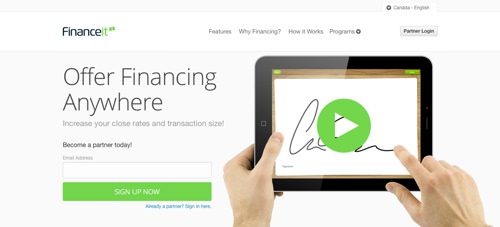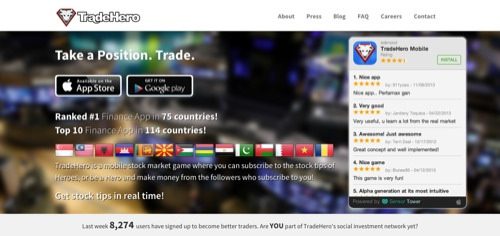 Arxan Technologies to offer all FS-ISAC & BITS members a complimentary, new iOS Mobile App Vulnerability Assessment.
Arxan Technologies to offer all FS-ISAC & BITS members a complimentary, new iOS Mobile App Vulnerability Assessment.
- Fiserv awarded patent for predictive modeling technology.
- BillGuard launches on Android; unveils new data breach alert feature.
Finovate is part of the Informa Connect Division of Informa PLC
This site is operated by a business or businesses owned by Informa PLC and all copyright resides with them. Informa PLC's registered office is 5 Howick Place, London SW1P 1WG. Registered in England and Wales. Number 8860726.
 Arxan Technologies to offer all FS-ISAC & BITS members a complimentary, new iOS Mobile App Vulnerability Assessment.
Arxan Technologies to offer all FS-ISAC & BITS members a complimentary, new iOS Mobile App Vulnerability Assessment.
 Who is most likely to detect card fraud? Financial institutions? Payment networks?
Who is most likely to detect card fraud? Financial institutions? Payment networks?
Download BillGuard at Google Play here.
Hot on the heels of our largest Finovate conference to date just two weeks ago in Silicon Valley, we’re excited to announce the dates for FinovateEurope 2015.
The London event will take place on February 10 & 11, 2015 at the beautifully restored Old Billingsgate Market Hall. FinovateEurope grew tremendously in 2014 with a sold-out crowd of 1,000 filling the auditorium to the brim. With the strong growth of fintech across Europe, we expect an even higher level of demand for the 2015 event and another sold-out show!
If you’d like to apply to demo your company’s newest fintech innovation at the event, please email us at [email protected] to get on the announcement list. We’ll be accepting applications starting in the mid-summer.
And,
if you’d like to attend and watch the cutting-edge of European fintech
debut via our fast-paced, demo-only format, tickets are now available at
the low pre-sale price of £895.00 (£400 off the list price) here. Tickets are limited so please lock in your seat today to guarantee your ability to attend (and these savings)!
We’ll see you in London in February (or New York in September)!
FinovateEurope 2015 is sponsored by: Life.SREDA and more to be announced
Hot on the heels of our largest Finovate conference ever (just two weeks ago in Silicon Valley), we’re excited to announce the dates for FinovateEurope 2015.
The London event will take place on February 10 & 11, 2015, at the beautifully restored Old Billingsgate Market Hall. FinovateEurope grew tremendously in 2014 with a sold-out crowd of 1,000 filling the auditorium. With the strong growth of fintech across Europe, we expect an even higher level of demand for the 2015 event and another sold-out show!
If you’d like to apply to demo your company’s newest fintech innovation at the event, please email us at [email protected] to get on the announcement list. We’ll be accepting applications starting in mid-summer.
And, if you’d like to attend and watch the cutting-edge of European fintech
debut via our fast-paced, demo-only format, tickets are now available at
the low pre-sale price of £895.00 (£400 off the list price) here. Tickets are limited, so please lock in your reservation today to guarantee your spot (and these savings)!
We’ll see you in London in February 2015 (or New York in September)!
FinovateEurope 2015 is sponsored by: Life.SREDA and more to be announced

The best thing about the news that BodeTree has raised $2 million in Series A funding may be the possibility that the company is not done raising money just yet.
According to reporting at TechCrunch, BodeTree CEO Christopher Myers is considering the possibility of additional funding from other investors by July. BodeTree, which made its Finovate debut in San Jose this spring, now has more than $6 million in total capital raised, with Greenline Ventures currently the company’s biggest investor.
 TIO Networks partners with New Jersey’s Public Service Electric and Gas Company to set up bill payment kiosks.
TIO Networks partners with New Jersey’s Public Service Electric and Gas Company to set up bill payment kiosks.

In today’s report, we’ll get to know three more companies that made their Finovate debuts at FinovateSpring 2014 in San Jose.
So far, our Behind the Scenes series has introduced CUneXus, ID.me, and Venovate in our first installment. Here, we’ll meet API-developer WePay, network security innovator, Rippleshot; and SMS-based omni-factor authenticator TextPower.
 One of the biggest debates in banking today is the role of the branch, and especially its significance in new account opening. Many analysts, this firm included, see remote account opening as a better experience for the customer and potentially much cheaper for banks (though it requires downsizing branch networks to achieve meaningful cost savings).
One of the biggest debates in banking today is the role of the branch, and especially its significance in new account opening. Many analysts, this firm included, see remote account opening as a better experience for the customer and potentially much cheaper for banks (though it requires downsizing branch networks to achieve meaningful cost savings).
But so far, most of the debate has been around the pros and cons of online/desktop account opening vs. the human-guided experience in branch. What’s missing in this discussion is the key role that MOBILE account opening will play going forward.
With superior technology (think OCR via smartphone camera, instant funding by taking a picture of your debit card, and real-time access to new deposits) mobile opening is much more compelling than desktop alternatives. And the technology is here today, from the likes of Mitek, Jumio and others.
Now, it takes hard work to execute via mobile channels. This report will help you get started.
About the report
Mobile Account Opening (link)
Port online account opening to smartphones to reach the sizable mobile-only segment
Author: Jeanne Capachin, Principal & Founder, CAPACHIN Research
Jim Bruene, Editor & Founder, Online Banking Report
Published 9 May 2014
Length: 28 pages
Cost: No extra charge for OBR subscribers, USD $395 for others (here)
Report excerpt (p. 12 of 28)

![]()
The announcement of Financeit’s new loan application process may not resound with the crescendo of multi-million-dollar fundings. But my guess is that the businesses who rely on Financeit to help them offer financing services to their customers are pretty pleased at the news.
Simplification and a clearer, through-line taking customers from the beginning to the end of the loan application process is the goal of the redesign. Here are the features of the “new Financeit experience”:
 Manilla to shut down July 1.
Manilla to shut down July 1.
![]()
Just in time for the IPO of Chinese commerce giant, Alibaba, TradeHero has announced that its virtual stock market platform is now available for Chinese traders and investors, whether they prefer iOS or Android.
Although just announced this week, the Chinese version of TradeHero that runs on iOS allegedly has been available since April. The Android version, which can be downloaded from app store at Baidu and Tencent as well as at Google Play, is the more recent arrival. But there’s no denying that having Chinese versions for both platforms will go a long way toward helping spread adoption of the technology, with more than 400,000 users in more than 100 countries already on board.